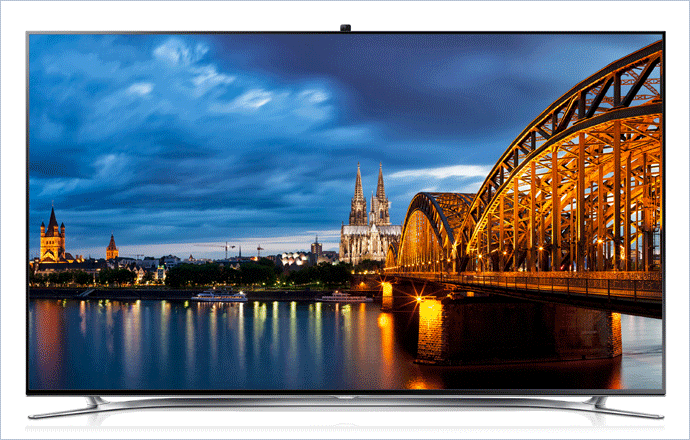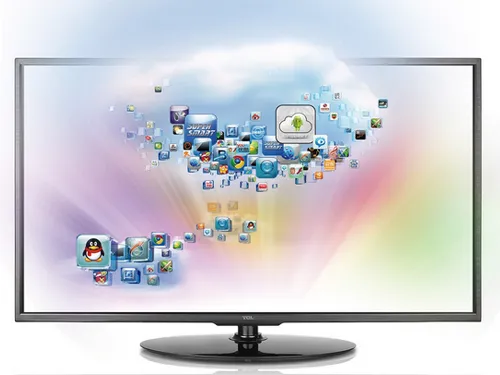The article is about flat-screen TV and the technology that has been developing over time. The author starts off by talking about television from the 1950s, and this one was a TV with a tube shape. Then, there are televisions from the 1960s which had an hourglass shape, and finally, televisions from the 1980s that have changed to flat screens (that can be mounted on walls). As for digital copies, there were models in 2007 which used plasma screens, and then in 2008 came LCD models.
What is a flat-screen TV?
Flat-screen TVs are a newer technology that has taken over the market in recent years. Flat-screen TVs come in all shapes and sizes, with prices starting at around $100. Flat-screen TVs have a number of benefits that set them apart from traditional televisions. First, they are much more immersive due to their large screens. This makes watching television more enjoyable because you don’t have to squint or strain your neck to see the picture. Additionally, flat-screen TVs are also much more energy efficient than traditional televisions. This is because they use less power to display pictures on their screens. Finally, flat-screen TVs are becoming increasingly popular due to their sleek designs and high-quality images. If you’re looking for an upgrade to your television, a flat-screen TV is a good option to consider.
Advantages of Flat-Screen TVs
There are many reasons why you may want to buy a flat-screen TV. Here are five advantages of flat-screen TVs:
1. They’re more comfortable to watch. A flat-screen TV is wider and taller than a standard TV, so it’s more comfortable to sit in front of.
2. They’re easier to clean. Flat screens don’t have curved edges that can get dirty, so they’re easier to clean.
3. They’re more energy-efficient. A flat-screen uses less energy than a standard TV because it doesn’t have the built-in filters that regular TVs use.
4. They’re better for gaming and other video activities. Because a flat screen has no curves, it allows for better graphics and gameplay when watching video games or watching other types of videos.
5. They last longer. Flat screens are designed to last longer than regular TVs because they don’t require the same amount of maintenance.
Disadvantages of Flat-Screen TVs
flatscreen TVs are the most popular type of television. They have a thin screen that is mounted on the wall. They are great for watching movies and TV shows, but they have some disadvantages.
One disadvantage of flat-screen TVs is that they are not as good as other types of TVs for watching sports. Flat-screen TVs do not have a lot of depth, so they can’t show details in the background or on the sides of the screen. This can make it difficult to see what is happening in the sports scene.
How to Shop for a Flat-Screen TV
When shopping for a flat-screen TV, it is important to consider your needs and wants. Here are some tips to help you find the perfect TV:
First and foremost, you need to decide what size TV you would like. There are 55-inch, 65-inch, 75-inch, and even larger sizes available. Once you have decided on the size, you can start to look at different types of TVs. Plasma TVs are still popular, but they may be phased out in the near future. LED TVs are currently the most popular type; they have better picture quality and last longer than any other type of TV. LCD TVs are slowly being replaced by LED TVs, but they tend to be cheaper than plasma or plasma/LED TVs. Another factor to consider is whether or not you want a smart TV. A lot of newer TVs have built-in smart features that allow them to connect to the internet and access streaming content. If you do not have an internet connection at home, a smart TV may not be for you.
Once you have decided on the type of TV, the next thing to consider is the price. The prices of TVs range from around $100 to $3,000+. It
What to Do if You Already Have a Flat-Screen TV
If you already have a flat-screen TV, there are a few things to keep in mind if you want to enjoy your screen to its fullest potential. First and foremost, make sure your TV is aligned properly. If it isn’t, the picture will be fuzzy and unimpressive. Additionally, try to keep your TV clean. Dirty screens can cause interference with the signal and reduce image quality. And finally, if you’re using a CRT monitor, be sure to calibrate it once a year; this will ensure that the image remains crisp and clear.
FAQ About flat-screen TV

Is this article about flat-screen TVs?
Yes, this article is about flat-screen TVs. This TV will be ideal for any student or individual with a smaller space. It has built-in speakers and is relatively easy to assemble.
How did flat screens affect the design of televisions?
Flat-screen TVs have changed the design of televisions as we know them, making them more compact and lighter. The original concept of flat screens was also a more practical idea that people could carry around with them. They are also known for providing increased clarity in the picture and being able to function better in a wider range of viewing angles.
What is the difference between plasma and LCD screens?
Plasma sets use to be the main choice among TV makers, but today, more and more people are opting for LCD sets. Plasma sets typically have better picture quality and deeper blacks, while LCD sets tend to have a thinner frame and much brighter colors. Still, Americans prefer plasma over LCD and there is still a major market for plasma in countries like Japan.
What was the first flat-screen TV ever made and was the tube shape different from what it is now?
The first TV ever made, according to some sources, was a flat-screen called the “optical telecine” which was similar to the design of today’s flat-screen TVs. It consisted of an array of 27 straight glass slits in the shape of a circle or rectangle with three horizontal rows per slit. Five motors drove the viewing and scanning at different speeds, according to which picture tube you were looking at.
What is the difference between a plasma TV and an LCD TV?
A plasma TV is also referred to as a “flat-screen” or “edge-lit” TV. It has a glowing or “flashing” appearance because the screen is made with red, blue, and green phosphor layers. A flat-screen LCD TV screen uses liquid crystals that control the backlight and are not shown during an image.
How do you know if the flat screens in your home are really HD?
It is hard to know which TV is really HD if they are not labeled. Depending on the brand, a lot of flat-screen TVs have an HD badge or indicator located somewhere on the TV. That is a good place you can start and search for that particular logo. If that doesn’t work, with your TV plugged in, you will be able to research what is the best way to test whether it’s actually a high-definition screen or not
What are the benefits of buying a flat-screen TV?
Well, the benefits of buying a flat-screen TV depend on what you’re looking for. If you’re looking to buy one to watch and entertain your friends, then maybe it’s not worth it for you. If you’re trying to create a sleek, professional look for your office or if you work in the television industry and are looking for a medium-sized TV to work with, then this would be perfect.
What is the difference between a tube-shaped TV and a flat-screen TV?
A flat-screen TV is a type of television that uses only a single large LCD screen to display images instead of the traditional tube-shaped structure. This means that backlight technology is much less needed, making these televisions more energy efficient and able to produce better quality images. They are typically 48 inches or larger in size with an aspect ratio of 16:9 while retaining a general monitor-like form factor. This was developed because tubes are bulky and do not lend themselves well to televisions as they have many restrictions.
How flat-screen TV Works
1. Understand the technology: It’s important to be familiar with the different types of technology that are out there, so you can better understand what is being talked about in this article.
2. Discuss different flat-screen TV models: In this section, the author will discuss different flat-screen TV models that have been developed over time. He starts off by talking about television from the 1950s, and this one was a TV with a tube shape. Then, there are televisions from the 1960s which had an hourglass shape, and finally, televisions from the 1980s that have changed to flat screens (that can be mounted on walls).
3. Discuss digital copies: In this section, the author will discuss digital copies and their development over time. He starts off by talking about models in 2007 which used plasma screens, and then in 2008 came LCD models.
Pros of the flat-screen TV
• The flat-screen TV’s sleek design is perfect for any home.
• The flat-screen TV’s large screen provides a great viewing experience.
• The flat-screen TV offers plenty of flexibility when it comes to mounting and positioning.
• The flat-screen TV has a variety of features that make it an excellent choice for entertainment purposes.
• The flat-screen TV is easy to use and can be set up in a matter of minutes.



